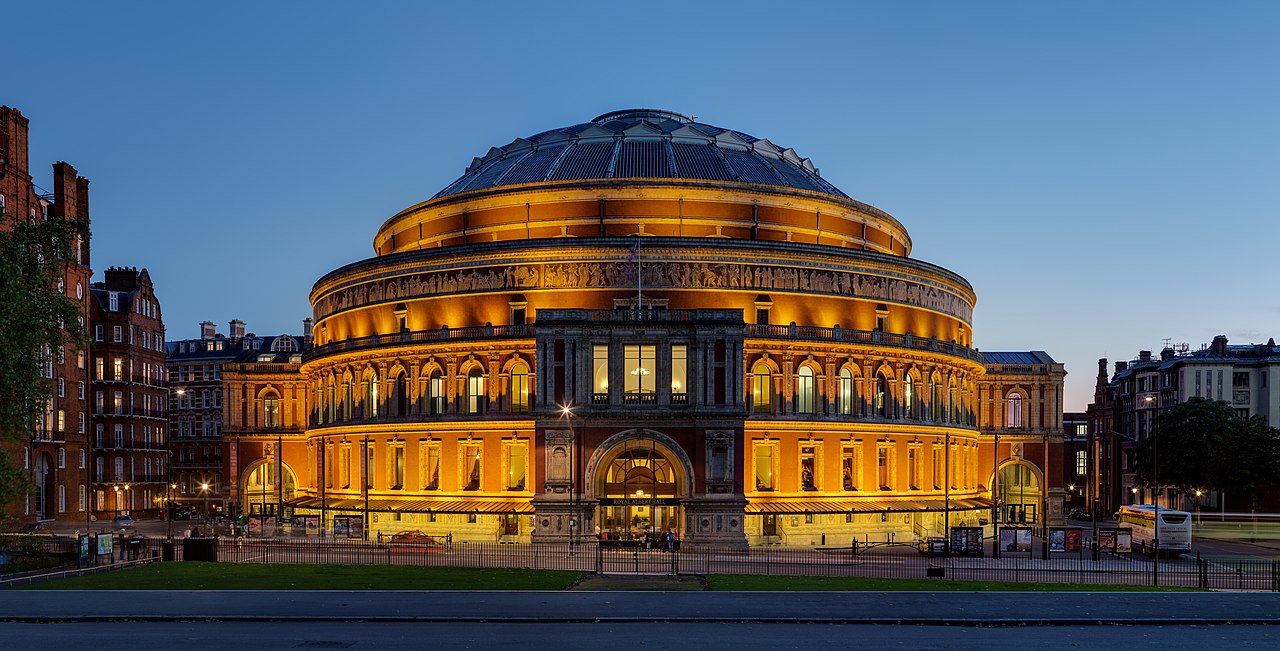"This hall was erected for the advancement of the arts and sciences and works of industry for all nations in fulfillment with the intention of Prince Albert Consort." (http://www.freetoursbyfoot.com/royal-albert-hall-tours/)

First performance at the Royal Albert Hall circa 1871 courtesy https://en.wikipedia.org/wiki/Royal_Albert_Hall#2014.
The Great Exhibition, or Crystal Palace Exhibition, of 1851 was such a success that Prince Albert proposed "Albertopolis", the construction of a series of buildings in Hyde Park to promote the advancement of the arts and sciences. Queen Victoria laid the granite foundation stone in 1867 in front of a crowd of over 7,000 spectators. "Invocation to Harmony", a composition by Prince Albert, was played followed by a 21 gun salute in Hyde Park.
A glazed iron dome, the world's largest unsupported dome at the time at 135 feet, covered the Royal Albert Hall. Inside were over 5000 seats facing a large stage in the middle. A pipe organ, consisting of thousands of pipes, was built in the space of 14 months for the price of 8,000 pounds.
During the First World War, the dome was used as a point of reference for pilots flying over London. During the Second World War, the dome was painted black to block out the light when a performance was going on.
Sir Winston Churchill speaks about Lincoln at Royal Albert Hall circa 1944 courtesy http://www.gettyimages.ca/detail/news-photo/photograph-of-winston-churchill-speaking-at-the-albert-hall-news-photo/513666045.
The first performance, Sullivan's On Shore and Sea cantata, was performed on May 1, 1871. Since then Royal Albert Hall has attracted the finest musicians, scientists, athletes and politicians. Richard Wagner played there. Sir Winston Churchill delivered speeches. Albert Einstein shared his scientific theories. Alfred Hitchcock directed his movie The Man Who Knew Too Much at the Hall. Luciano Pavarotti sang there.
Surprisingly, the Hall did not have the best reputation for acoustics. It was said that it was "the only place that a British composer could be sure of hearing his work twice". In the late 1960's, fibreglass "mushrooms" were suspended from the Hall's ceiling as acoustic diffusers, a move that seemed to make a difference.
Today, the Hall hosts up to 350 events a year. The former conservatory is now the location of the Queen Jubilee steps.

No comments:
Post a Comment